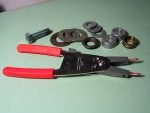Hi all,
Based on the conversation in another thread and my inability to find what I am requesting, I wonder if someone would post a basic step by step to lube the rear wheel bearings. Since the break down of this bearing seems very dangerous I am guessing that many would be happy to have the info.
Pics are not necessary but the correct sequance, maybe any special tools and/or their substitutes, and the correct lube type would be very valuable.
Thanks a bunch all!
M
Based on the conversation in another thread and my inability to find what I am requesting, I wonder if someone would post a basic step by step to lube the rear wheel bearings. Since the break down of this bearing seems very dangerous I am guessing that many would be happy to have the info.
Pics are not necessary but the correct sequance, maybe any special tools and/or their substitutes, and the correct lube type would be very valuable.
Thanks a bunch all!
M








